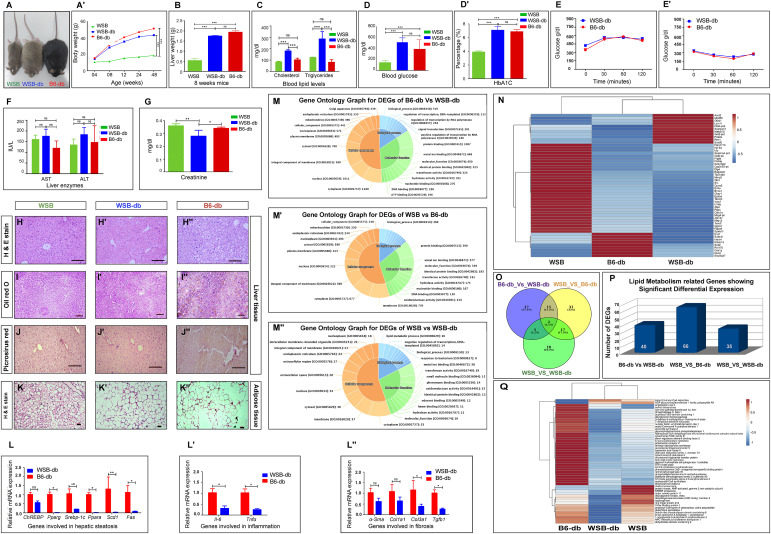
Transcriptomic and pathological profiling of a new congenic mouse model with Lepr mutation: Evaluating susceptibility to the development of obesity and NAFLD


Non-alcoholic fatty liver disease (NAFLD) and type 2 diabetes mellitus (T2DM) are two disease conditions for which obesity is a risk factor.1 Due to the close relationship between the three pathologies, researchers frequently use the same mouse models to identify the underlying processes of obesity, NAFLD, and T2DM. For instance, leptin (Lep)-null (ob/ob) and leptin receptor (Lepr)-deficient (db/db) mice spontaneously develop NAFLD and show different phenotypes of extreme obesity and diabetes, respectively.2,3 Creating and applying more pertinent models to analyze disease-specific pathways is necessary. Interestingly, wild-derived WSB/Eij mice are resistant to obesity and developing NAFLD. To comprehend the reason for this resistance and the potential role of the Lepr mutation in the development of obesity, we created the congenic strain WSB-db. These congenic WSB-db mice developed mild obesity and hyperglycemia without hepatic steatosis/NAFLD and renal consequences. Various differentially expressed genes (DEGs) were discovered in congenic WSB-db compared to its parent strains (WSB/Eij and B6-db), which may explain the different susceptibility to NAFLD. Thus, the congenic WSB-db mice may be a suitable model to separate the genes and mechanisms crucial to obesity and NAFLD.
